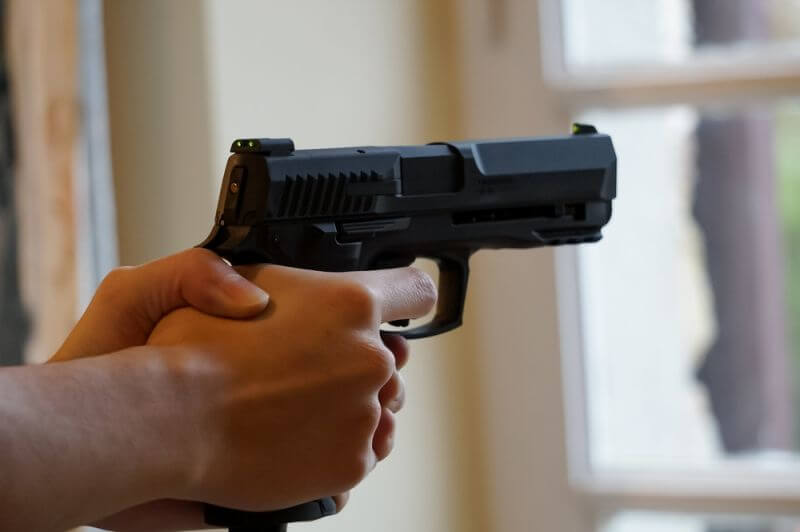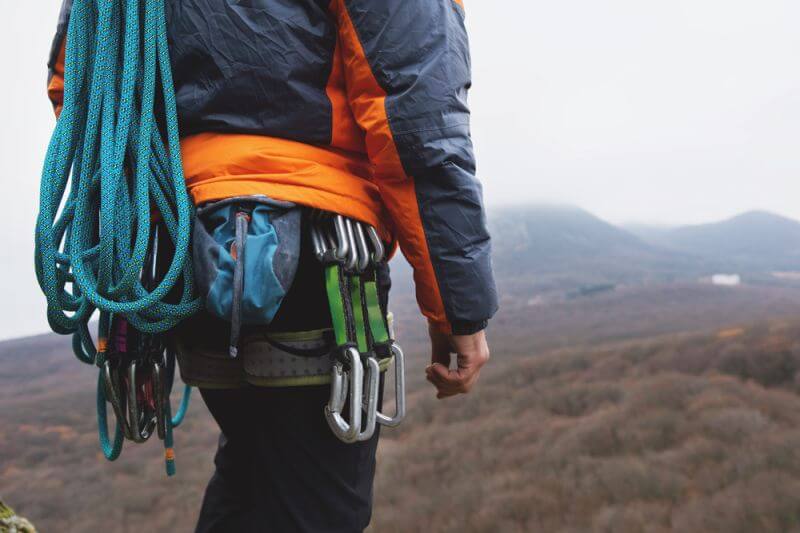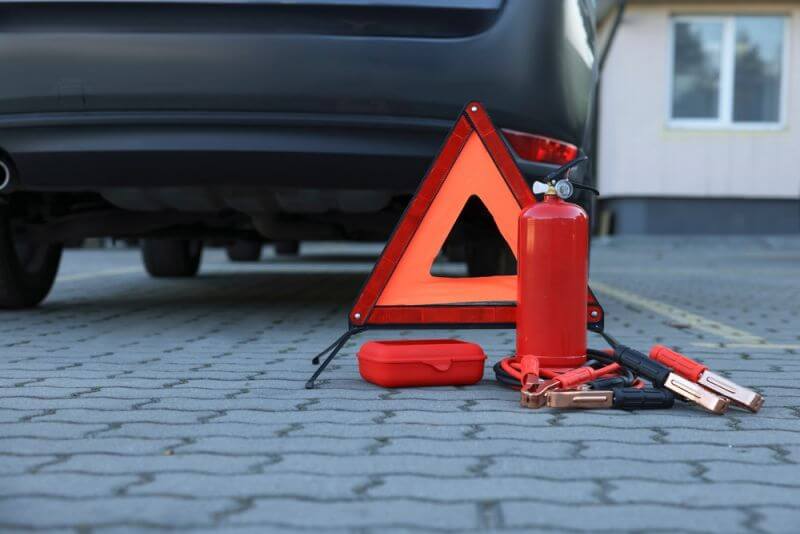Building Exterior
The goal here is to keep others from seeing what is going on inside your home, getting inside, and alerting you to attempts to get inside.
Exterior Walls & Roof
I have seen criminals cut right through the walls and roofs of buildings that were hardened after the fact, making doors and windows hard to penetrate. This can also bypass sensors. In one crime, thieves cut a hole in the roof of a gun store and lifted all the automatic weapons off the class III rack and up out of the roof without setting off the alarm.
Hard cover can be improved in key places, such as around windows, walls, and doors of fighting positions used to defend the home. Hard cover should also be denied to attackers.
Garage
Where possible, park cars in a garage. In states where you can get away with it, only install the rear license plate and back into parking spaces. This makes it easier to get out in a hurry and makes it harder for law enforcement and tow trucks to scan your license plate using Automated License Plate Readers in parking lots and car ports.
Some repossession and tow companies, which often employ felons, have access to the APLR database, and law enforcement officers have also used the APLR database to target citizens for crimes. You don’t want anyone with access to know whether you attend gun shows, political rallies, or which church you attend. It’s none of their business.
Garages shouldn’t have windows that allow a criminal to peek in and seek if your car is there or not.
It should also be manually lockable from the inside. Otherwise, anyone with the right technology can open it using the garage door opener.
Doors & Windows
Hardening the rear door to my business and installing a roll-down shutter over the glass front of my business stopped the smash and grab robberies in their tracks. Once I did that, I only had one attempted break-in.
Somebody tried to cut through my steel back door with a plasma cutter. When they couldn’t get in, they tried to get into the suite next door. We hardened our back doors at the same time and covered the lock throws with hardened steel plates because the doors opened outward. They cut clean through his door and when he unlocked the dead bolt, it fell to the ground, but they didn’t get in.
Doors:
- Install A Steel Security Door – This is a second door that goes outside your primary door. It complicates breaching, because the team has two doors to get through. They will probably hook padded chains up to it and use a heavy vehicle to tear it off the outside of your home, but this occupies manpower and can make noise, and someone might notice the truck backing up. It also puts someone in harm’s way while they hook up the chains. In any case, a security door is also a second line of defense in case a household member (I’m not naming any names) opens your door to talk to someone instead of talking to them through the door. You may have seen video of law enforcement sticking their foot in the door so they can charge a family member if they try to close it. Security doors prevent that from happening and a way more secure than chain locks. A third security door can also be installed past the exterior door, creating a security entry, artic entry or mudroom, and giving home invaders a third door to breach, hopefully one that they don’t know about and aren’t prepared for.
- Install Steel Exterior Doors – Exterior doors should be made of steel and as strong as you can afford.
- Install Reinforced Jam and Hinge Plates – These are plates that strengthen the door hinges and door jamb against forced entry.
- Install Horizontal Hinge Pins – Horizontal hinge pins are long screws with a steel pin for a head, that are installed into the door or door frame in place of one of the hinge screws. A hole is drilled opposite the pin, so it can enter past the hinge plate when the door is closed. Together with reinforced hinge plates, hinge pins strengthen hinges and ensure that the door holds fast even if the vertical hinge pins are removed.
- Install 3.5” Screws – Long woodscrews ensure that the strike plate, hinges, and lock hardware screws penetrate deep into the door and past the door jamb into the framing, making it harder to kick the door in or force it open.
- Install Wrap-around Lock & Doorknob Reinforcement Plates – Wrap-around lock plates strengthen the edge of the sheathing around the lock and doorknob, making it harder to break the doorknob and deadbolt lock out of the door or causing the edge of the door to separate during a forced entry attempt.
- Install Reinforced Strike Plates – Strike plates hold the bolt in place in the door frame when a door is locked. Reinforced strike plates keep the bolt from tearing free from the door frame when a door is kicked or forced entry is attempted.
- Install Door Reinforcement Locks – Door reinforcement locks are additional locks that install on the door and door frame, giving doors additional points of contact, to make them more resistant to being kicked in or forced open.
- Install a Night Lock – A Night Lock is a lock for use when you are at home that drops into a sheath installed in the floor. It is much more secure than a wedge.
- Deadbolt Locks – Install quality deadbolt locks. Some locks are harder to bypass, bump or pick than others. You can find out which are harder to open by researching them. Lockpicking sites and YouTube channels are a good place to start.
Windows:
- Install Window Bars – Windows should be covered with bars that can be released from the inside for escape during a fire.
- Install Roll-down Shutters – Roll-down shutters make it harder to get through glass doors or windows. In my case, they caused criminals to move on to easier prey.
- Install Security Film on Glass – Security film causes glass particles to hold together after the window breaks, making it harder to rake or bend the glass out of the way. It also improves any ballistic cover provided by the glass and holds the window together in the event of a blast, preventing it from becoming thousands of sharp bits of fragmentation.
- Install Heavy Blackout Drapes – Heavy blackout drapes keep light from leaking out your windows, helping maintain light discipline and making it harder to know if someone is home and where they are. They make cut down on secondary fragmentation from windows and improve their insulation value.
Home Interior
Once an intruder gains access to your home, you need to be able to stop them or get away.
Alarm System
Alarm systems are usually comprised of a controller, sensors, and reporting mechanisms. The controller is the brain, the sensors are the door contacts, window contacts, and motion detectors, and reporting mechanisms alert you via lights, siren, telephone, cellular, text, radio, and so on.
The thing about cameras, alarms, and police response is that the police seldom get there in time. I had an officer get the call for my alarm while he was driving by. He thought for sure he was finally going to catch someone. Nope. By the time the alarm company got the call, verified it was legitimate, dialed 9-1-1 and dispatch routed the call to the officer, the guy was already long gone.
Be Able to Defend Your Home
The average gunfight is over in about 3.5 seconds, from the first shot to the last. So, there is often time for someone with training to draw and deliver aimed fire, or duck behind hard cover, but there’s not usually time for someone else to drive to your house and protect you. It is usually over with by the time they get there. So, you can’t subcontract the duty to protect your family out to some company for $50 a month or count on the government to protect them. As FEMA likes to say, “Until help arrives, YOU are the help!”
So, an alarm system might scare off amateurs who case your house to steal your property while you’re at work or on vacation but realize a pro will research your system and how to defeat it. Personally, I would put together home defense waist packs for household member who are able to defend themselves and buy childproof quick-access lockboxes first. Then I would build safe rooms or fighting positions with quick access to long guns. Only then would I put in an alarm system.
Safes
Having a safe isn’t enough by itself. Safes must be secured to your foundation and to wall studs, preferably someplace that’s too tight to use pry bars. If they can get a gun safe over on its back in the middle of a room, they’ll have it open in seconds. Even a good safe, properly installed, will only slow them down. If it’s not well secured, they’ll just throw the whole thing on a dolly and take it someplace they can work on it in at their leisure.
Don’t put all your eggs in one basket and don’t put your life’s savings all in the same place either, no matter how secure you think it is. You’ll also want a few quick access gun safes in strategic locations.
Safe Rooms & Other Modifications
If you have the money to pay a contractor to build a safe room, you have to money to pay for security consulting. The rest of must settle for something less, but a safe room doesn’t have to be a bunker. Slowing the bad guys down long enough to arm yourself, favorable lighting, and putting a little hard cover between you and them might be all the advantage you need.
Even a prepper on a budget can replace an interior door with a tougher exterior model or pick up a few surplus level IV strike plates at a gun show and secure them to the back of a door to give them some hard cover to hide their vitals behind while they defend themselves in a home invasion.
A cheap way to do it is to install a rack of hooks to hang clothes on, that hangs over the top of the door. The plates can be suspended from that in a vertical row and fastened to the door with straps of webbing secured by countersunk woodscrews. You can’t see anything when the door is shut, but the result is like a narrow, stationary ballistic shield used in entry operations. If you’re renting, fill the screw holes when you move.
Another cheap way to add hard cover anyplace you have access to dead space, such as cavities under stairways, is to measure the cavities behind sheetrock and between wall studs, pour steel-reinforced concrete slabs, and install them in those cavities. They can be held in place with metal strapping. The studs themselves can be beefed up with ¼ mild steel stakes.
I cut a door in the sheetrock of a closet to access the space under the stairs, installed a shelf to hide it, and held it in place with cabinetry magnets. It was simple, cheap, and effective. I installed a one-way mirror so I could see out into the living room and cut a door so I could see past through carpet in the stairs. It was a decent little fighting position with cover about waist-high that enabled me to fire into the stairway or the living room.
Under normal circumstances, I don’t recommend ambushing a home-invader from behind one-way glass. Ask your attorney, but you might have a hard time explaining how you were in danger if the intruder couldn’t see you. I don’t imagine he’ll have a problem with you installing a little extra masonry in your walls though.
If you can hang sheetrock, you can build a space like that anywhere in your home. The point is, you have the home-field advantage, so prepare the battlefield to your advantage ahead of time.
Emergency Exits
You should be able to get out of your home, even from upstairs rooms, basement rooms, and panic rooms. Otherwise, you could become fish in a barrel or burn to death.
Conclusion
An effective layered home defense begins beyond the perimeter, must strive to eliminate human error, the duty to protect your family cannot be outsourced or delegated to a company or the government, and the only way to stop bad guys with gun is with better-trained good guys with guns.









